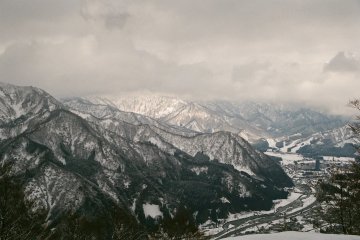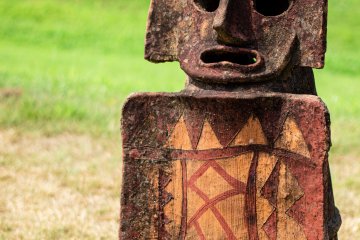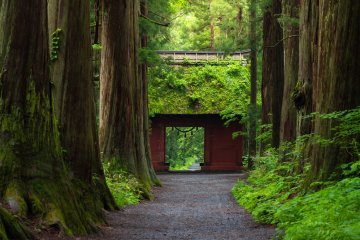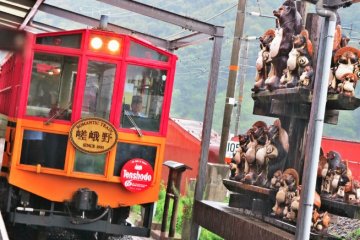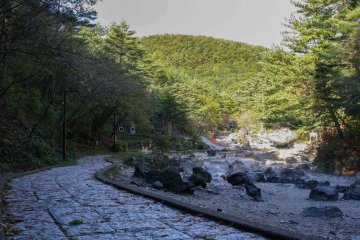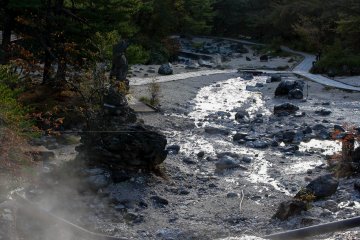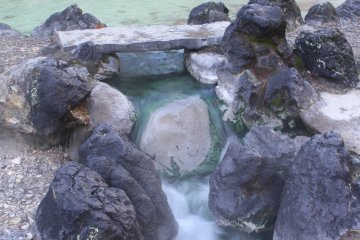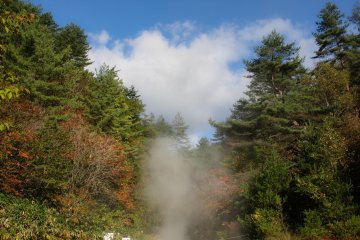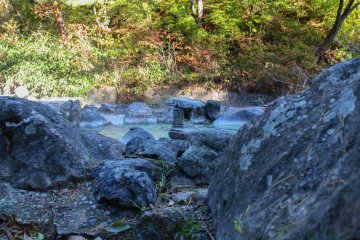Meaning the ‘riverbed of the west’, Sai No Kawara Park (西の河原公園) is often mistranslated as ‘riverbed of the underworld’ (賽の河原公園). This is because the 15,000 liters/minute of water flowing through the park is often 50 degrees Celsius and highly acidic, making the soil around the riverbed barren and devoid of any plantation. There’s a legend that when children die before their parents, they are transported to Sai No Kawara. Here they stack tall pile of rocks for the sake of their parents in the living realm only to be cruelly knocked down by an infernal demon. Indeed, with ethereal smoke hovering around the park, piles of rocks precariously sitting by the riverbed and emerald water bubbling through the desolate area, it is only too easy to expect a demon to arise through the mist to joyfully topple stones and torment poor children. However, the legend continues with Jizo, the protector of children in Sai No Kawara, where he saves the day by preventing the demon from tormenting the children. It will then come as no surprise that you will find many Jizo statues with their red beanies and red bibs around Sai No Kawara Park representing this legend.
Also seen around the park are the bronze statues of the German medical scientist Dr. Belz, and Dr Sukuriba who shared the properties of Kusatsu hot spring with the world. Additionally there is a visitor center, the Sai No Kawara open-air bath boasting a total area of 500 square meters, a number of statues representing mythical figures, and stone monuments engraved with haiku songs about Kusatsu’s hot springs.
Getting to Sai No Kawara Park is easy. From Kirishimaya Ryokan it is only a 10 minute walk. You can get there by walking to Yubatake and turning into Sai No Kawara Street. Through Sai No Kawara Street you will experience a long, narrow cobblestone street lined with Manju (red bean filled buns) stores and souvenir stores makes it an entertaining journey; and although the whole journey won’t take very long, with all the stores along the way, be prepared to be distracted – but in a very good way.



